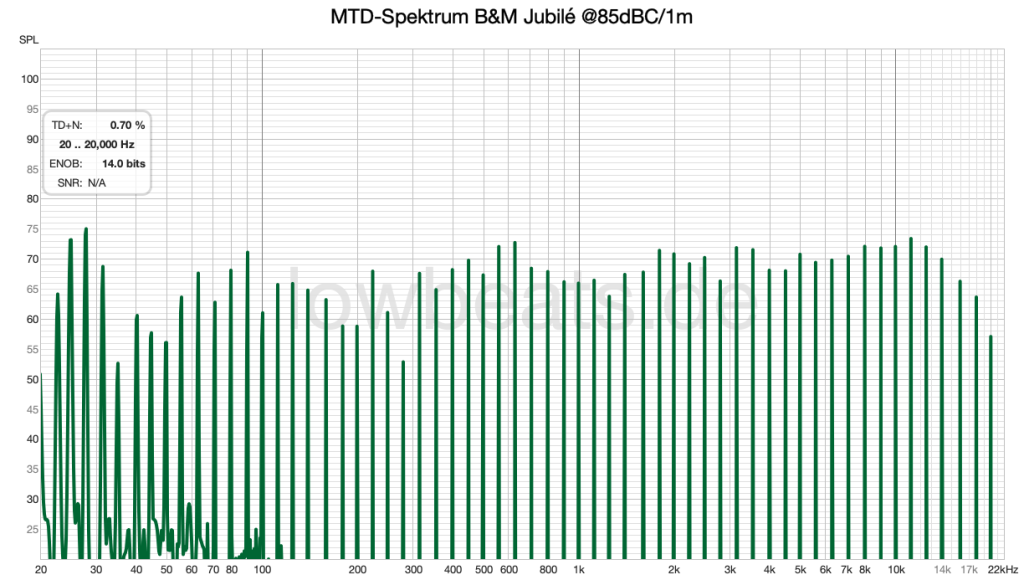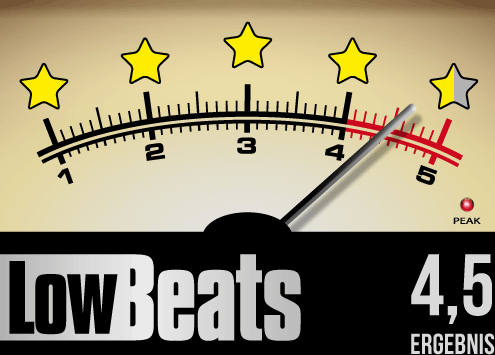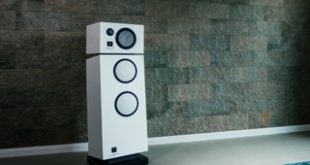The Backes & Müller Jubilé follows a long tradition of flagship loudspeakers that were technologically far ahead. As a companion in the industry for over 40 years, I was subconsciously aware of this, but it only really became clear to me when I was researching the LowBeats History story for the 50th anniversary of the Saarbrücken-based loudspeaker manufacturer. Especially in the first decades, B&M won one test after another. And when the Federal Republic of Germany presented Comrade General Secretary Mikhail Gorbachev with a hi-fi system at the end of the 1980s, the speakers were of course from Backes & Müller – they wanted to show what they could do.

Admittedly: B&M’s career had a few breaks after that. But the Saarbrücken-based company was lucky enough to be able to recruit Johannes Siegler in 2001. Siegler is a developer and musician and also the boss of studio professional KS Digital. He understood the Backes DNA and managed to bring the brand back to the forefront of technology, partly through collaboration with the Fraunhofer Institute. Technology = top, sound = exceptional, so everything is good again?

Not quite. Critics complained that B&M was still visually stuck in the 1990s – and they were probably not entirely wrong. But the Saarbrücken-based company managed to break free at the HIGH END 2023 with a bold design concept. And so the Backes & Müller Jubilé not only became a technology flagship for the anniversary, but also the aesthetic foundation of an entirely new family. But the Jubilé is the center of attention here. Although it was presented last year, its production was slow to start for unforeseen reasons. Accordingly, this is only the second nationwide test; our colleagues at stereo had the first impact at the end of last year.

Backes & Müller Jubilé: Cylindrical shaft from the design box
Let’s first look at those technologies that are non-negotiable at Backes and Müller. Firstly, the negative feedback of the drivers, which has always made the sound appear relentlessly precise. And the so-called “FIRTEC technology, which (also for almost 20 years) enables absolute phase coherence of all drivers. Thanks to increasingly powerful DSPs, FIRTEC still guarantees pinpoint accuracy even with wild equalizer settings. And then there is the cylindrical wave radiation, which has also long been part of B&M’s self-image and which – if done correctly – produces considerably fewer ceiling and floor reflections than classic hi-fi loudspeakers. Cylindrical wave transducers therefore “carry” the sound further and are particularly suitable for large rooms and greater listening distances (above 3 meters). The only question is: how do you create a cylindrical wave? An array of stacked drivers is very helpful here. Two on top of each other works to some extent, four is already very good. In the Jubilé, however, eight 15-centimeter midrange drivers are lined up like a string of pearls over the entire height of the almost 1.5-meter-high speaker. If they are all allocated the same frequency range, this leads to strong vertical cancellations; floor and ceiling reflections are virtually eliminated.

However, if you also want to create a cylindrical wave in the tweeter, you have to stack many tweeters on top of each other – as in the Infinity Reference Standard, for example. Or, in a long collaboration with the Fraunhofers, a design has been developed that forms a cylindrical wave from the radiation of a classic ring radiator tweeter that matches that of the midrange drivers…

The biggest hurdle for a design-oriented anniversary speaker was, of course, the bass. There is a highly potent high and mid-range: so how do you fit an equally potent bass into a comparatively slim and graceful design? We succeeded.

Siegler has special professional basses built for this purpose, which sit invisibly in the cabinet and only emit their sound via slit-shaped bass reflex openings on the back of the speaker – the drawing illustrates the principle. This bandpass principle was used much more often in the past and, to be honest, I’m not a fan. But Siegler reassured me: “This principle would dampen an unregulated driver so much that no usable bass reproduction would be possible. But thanks to our DMC feedback, the diaphragms have to follow the input signal exactly. The strong damping of the bass results in a totally dry bass, the usual resonance of the bass cones is completely eliminated, all sound power is achieved only by the power amplifiers (editor’s note: over 1,000 watts in the bass alone).”

As with a subwoofer, the pressure ratios in a band-pass design are particularly high. The cabinet of the Jubilé is built accordingly: We find a mixture of multiplex and MDF and the rear panel even consists of solid metal plates that are immobilized with glued-on anti-resonance plates.

In general, everyone is invited to let their fingers wander over the slightly curved side cheeks and to do a knock test from time to time. The housing of the Jubilé is exemplary low-resonance. And the fact that the entire Jubilé construction seems to float on a steel base – also painted white, of course – doesn’t make things any uglier… Or what does Johannes Siegler say? “At B&M, we build unique pieces – that’s why we can realize the Jubilé in almost any finish that matches the living space.” At this point we want to pause for a moment and ask: In a really beautifully made cabinet, on whose baffle you can only guess at the drivers due to the reduced outlet openings, the midrange and tweeter generate an almost optimal cylindrical wave from 90 hertz. However, the completely invisible basses radiate their energy to the rear. Does that work? Yes, for two reasons. Basses below 100 Hertz prepare themselves in a spherical shape, but would naturally have a certain time delay because they are radiated to the rear. However, this is where the B&M-FIRTEC processor steps in, bringing all signals to the same radiation plane in a phase-linear manner.
Practice
In terms of technical and acoustic handling, the Jubilé is far superior to most loudspeakers on the market. Thanks to its wide range of EQ options, the listener can compensate for the acoustic disadvantages of an unfavorable placement much better than with passive speakers. And if the Jubilé delivers too much or too little level at this or that point in the frequency range in the listening room, this can be adjusted down to a tenth of a decibel. The inexperienced user should not attempt this; Backes & Müller has plenty of people with a high level of adjustment expertise. And different distances can also be adjusted perfectly using the delay settings of the B&M PPG. I had the advantage of having already tested other Backes models and, together with the B&M people, it took me little more than half an hour to adjust the PPG perfectly for the large listening room. The white-grey box is cable-bound and not actually intended for permanent operation. You set the Jubilé, can set up three different presets (it’s always useful to have a preset for quiet listening, for example) and then return the PPG to the dealer. Because at almost 1,000 euros, the PPG is not cheap at all…

Ideally, the Jubilé is controlled via the EasyLink DigitalConnection from B&M, for which you would also need the ICE preamp from Saarland. Then you would only remain in the digital world from the preamplifier onwards. However, you can also control the Jublié in the classic way using a preamp via XLR cable; then everything is only digitized after the input. A preamp makes sense, because unlike the Lyravox models, for example, the Jubilé has only a few inputs and no built-in adjustable preamp. So: the connection history is uncomplicated. And thanks to PPG-EQ, installation is also comparatively simple and works even in acoustically less favorable listening/living rooms. But we also have to come back to the Jubilé’s special radiation pattern. This is not for music lovers who like to sit close to the speakers. A distance of 2.5 meters or more is highly recommended in the case of the Jubilé; even four or five meters is no problem. With classic hi-fi loudspeakers, you usually get too much of the room acoustics in the sound image at such a distance. A certain distance is therefore important. And the sweet spot. You already know this from B&M sound transducers, but I have to emphasize it once again at this point: The listener must sit directly in the center of the Junilé, otherwise the magic is quickly gone. But if you have your listening position directly in the sweet spot, you will be rewarded with a rare wealth of plasticity, depth and micro-detail. Like all B&M models, the Jubilé is designed for rousing live concerts rather than quiet campfire music. This has always been the case, but Johannes Siegler may even have pushed this trait a little further as a musician. This means that this speaker is level-resistant. The measurement laboratory measured 112 dB with the usual measurement signals. A lot more is possible with dynamic muscle. However, the built-in limiter intervened at some point – Backes & Müller’s distortion specifications are more stringent than those of LowBeats. Another reason is probably the bass equalized to 22 Hertz. Such a low bass with a level of 120 dB is of course brutal – and actually no longer useful for hi-fi…
Hearing test
On the one hand it’s good, but on the other hand it’s also a crux when you have an instrument as powerful as the PPG at hand. When adjusting the settings before the listening test, we tried not to change the original character by EQing it too sharply. It is a very lively transducer and should remain natural. The plasticity is simply awesome. If you keep your eyes closed, you always feel like touching the instruments and singers in front of you – the Jubilé draws the sound events so precisely, so three-dimensionally into the imaginary space. It could hardly be better in stereo. And the hardest part: this magic doesn’t fade at high levels. Almost the opposite… When word got around in my small listening circles that the Jubilé was in the listening room, I suddenly had a lot of unexpected visitors who were only too keen to listen to the Jubilé model – not necessarily with music that you listen to quietly, of course. I remember one afternoon when we listened to the remastered version of “Welcome To The Pleasuredome” by Frankie Goes To Hollywood up and down – simply because it was so great. It was a funny picture, of course: three men sitting right behind each other, because the fun of Jubilé unfortunately only takes place exactly in the middle.

But the fun is gigantic there. The driving bass lines and bass drums of the recording crashed into the listening room with such precision and pressure that everyone present was left speechless. After 20 minutes of listening, we first had to stop – to give our ears a break and to collect ourselves. Then let it continue: Holly Johnson’s slightly nasal voice was always easy to understand in the thunderstorm of sound, even at a very high level; the Jubilé masks virtually nothing. This has unquestionably addictive potential. In any case, my visitor only left after four hours and actually wanted to keep listening… Let’s not misunderstand each other: B&M models have always been very strong in character: with a lot of drive, extremely crisp, pithy and precise. Not every hi-fi fan likes that. And all those who like the audiophile fine resolution of a large Magico will also miss the Jubilé. During particularly critical passages of music, I often found myself moving my hand inconspicuously to the PPG to make the sound a little softer… I left it alone. Because if you switch to normal hi-fi speakers after the Jubilé, they immediately sound boring. Listening to Jubilé is like watching the same movie again with VR glasses. The colors may not always be exactly right, everything is deeper, more complex and many things happen between the layers that you didn’t even notice before. That really impressed me (or us).
Conclusion Backes & Müller Jubilé
They have always been able to make absolutely captivating music – convincing both loudly and quietly. But now the Backes & Müller sound transducers also look really stylish. After a long transformation phase, the new message from the long-established Saarbrücken-based company is “We get it.” From now on, acoustic high-tech is also available in a form that even architects will enjoy. And the Jubilé is currently the most impressive ambassador of this “modern art”. But the Jubilé is still quite rare. Fortunately, it is also present at the LowBeats organized HiFi Days Darmstadt (on to see and hear…
Rating
SoundUsabilityWorkmanship QualityTotal |
| The rating always refers to the respective price category. |
| | Extremely grippy, precise-fine, highly dynamic sound image |
| | Highly stable spatiality, very deep bass |
| | Extensive EQ adjustments possible |
| | Very narrow sweet spot |
Distribution: Backes & Müller GmbH, Altenkesseler Str. 17, 166115 Saarbrücken, Germany
www.backesmüller.de
Pair price: (manufacturer’s recommendation): Backes & Müller Jubilé: 48,000 euros
Technical data
| Backes & Müller JUBILÉ | |
|---|---|
| Concept: | 3-way active floorstanding speaker, bandpass, equalized |
| Equipment: | HT: 1 x ring radiator with aluminum waveguide, MT: 8 x 15 cm, TT: 2 x 30 cm (DMC cone control) |
| Power: | 3,000 watts |
| Max. level (continuous/short-term): | 112 / 120 dB |
| Special features: | Cylindrical wave radiation, DMC negative feedback, FIRTEC signal processing, optional B&M PPG available |
| Dimensions (W x H x D): | 26.0 x 145.0 x 52.2 cm |
| Weight: | 82.0 kilogram |
| All technical data | |
More about Backes & Müller:
50 years of Backes & Müller: always active against the current
Test Backes & Müller BMLine12: the last of its kind







